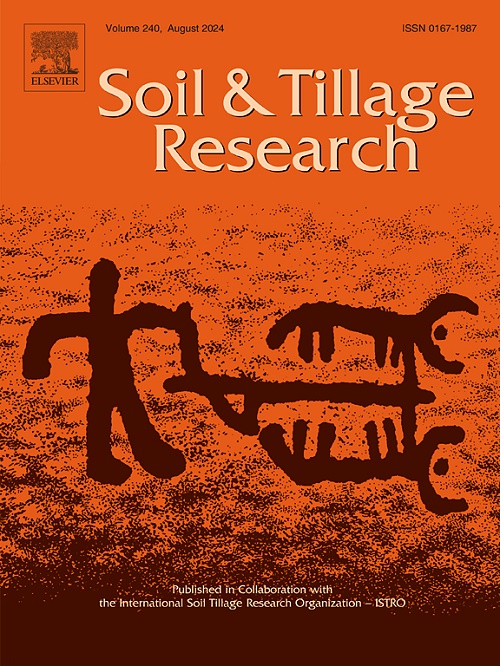Application of biochar in saline soils enhances soil resilience and reduces greenhouse gas emissions in arid irrigation areas
IF 6.1
1区 农林科学
Q1 SOIL SCIENCE
引用次数: 0
Abstract
Quantifying soil health is crucial for evaluating and guiding soil management strategies. Soil salinization has become one of the main threats to soil health. However, the effects of biochar application on the improvement of saline soils and greenhouse gas emissions remain controversial. This study focused on spring maize fields in the Hetao Irrigation District and conducted a two-year field experiment from 2021 to 2022. Biochar derived from maize stalks at a pyrolysis temperature of 400℃ was a evenly spread over the soil surface, manually incorporated, and then rotary tilled to ensure thorough mixing within the 0–30 cm soil layer. Five field treatments were set up: CK (no fertilizer), BC0 (0 t ha−1 biochar), BC7.5 (7.5 t ha−1 biochar), BC15 (15.0 t ha−1 biochar), and BC22.5 (22.5 t ha−1 biochar). The results showed that appropriate biochar (15.0 t ha−1) addition increased soil profile nitrate nitrogen content, 0–40 cm soil organic carbon and total nitrogen, 0–120 cm soil water storage (SWS) and electrical conductivity, as well as maize plant height, leaf area index, dry matter accumulation, grains per row, 100-grain weight, yield, and water use efficiency (WUE). However, excessive biochar application (22.5 t ha−1) reduced the effectiveness of soil water storage, led to salt accumulation, decreased soil profile nitrate nitrogen content, and increased maize water consumption. Additionally, biochar application reduced N2O emission peaks, N2O emission factors, and cumulative emissions, while promoting soil CH4 absorption. Biochar reduced cumulative soil CO2 emissions, but excessive application (22.5 t ha−1) increased CO2 cumulative emissions. Sole nitrogen fertilizer application significantly increased global warming potential (GWP) and greenhouse gas emission intensity (GHGI), but the combination of nitrogen fertilizer and biochar significantly reduced GWP and GHGI. These findings provide a theoretical basis for improving the health of saline soils and mitigating climate change.
求助全文
约1分钟内获得全文
求助全文
来源期刊

Soil & Tillage Research
农林科学-土壤科学
CiteScore
13.00
自引率
6.20%
发文量
266
审稿时长
5 months
期刊介绍:
Soil & Tillage Research examines the physical, chemical and biological changes in the soil caused by tillage and field traffic. Manuscripts will be considered on aspects of soil science, physics, technology, mechanization and applied engineering for a sustainable balance among productivity, environmental quality and profitability. The following are examples of suitable topics within the scope of the journal of Soil and Tillage Research:
The agricultural and biosystems engineering associated with tillage (including no-tillage, reduced-tillage and direct drilling), irrigation and drainage, crops and crop rotations, fertilization, rehabilitation of mine spoils and processes used to modify soils. Soil change effects on establishment and yield of crops, growth of plants and roots, structure and erosion of soil, cycling of carbon and nutrients, greenhouse gas emissions, leaching, runoff and other processes that affect environmental quality. Characterization or modeling of tillage and field traffic responses, soil, climate, or topographic effects, soil deformation processes, tillage tools, traction devices, energy requirements, economics, surface and subsurface water quality effects, tillage effects on weed, pest and disease control, and their interactions.
 求助内容:
求助内容: 应助结果提醒方式:
应助结果提醒方式:


